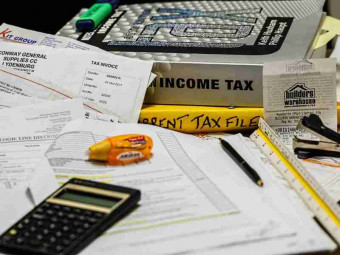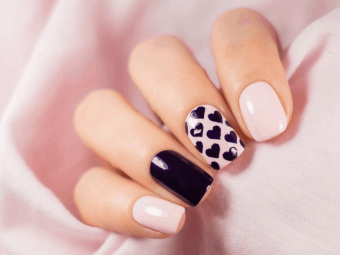Videography Storytelling
Tags: Storytelling
Creative videography, storytelling, shooting and editing in an easy to follow course for intermediates and beginners.
Last updated 2022-01-10 | 4.6
- You will know how to make videos that will entertain- inspire and even teach an audience.
- You will be qualified not only to tell a story
- but to keep your audience engaged with rich narration
- music
- sound effects and timing.
- You will know how to be an entertainer.
What you'll learn
* Requirements
* Any kind of camera that can shoot video. It doesn't matter what. And you'll need a microphone.* A computer or laptop for video editing. It can't be really old
* but also doesn't need to be fancy and expensive.
* Hopefully you have a desire to captivate an audience with your video storytelling skills.
* You should be able to use a PC or Apple Mac at a basic level.
Description
Do you want to be a filmmaker? Most video courses focus on teaching how to get better footage. And that's a good first step. But this course will do far more. It will teach you how to weave great footage into an even greater story, regardless of how mundane or ordinary the topic may be.
I'm a TV producer, director and editor. My shows have been on major networks in many countries. I've been doing this for 38 years. And no matter where your videos will be displayed, you need to know the content of this course. Most of it you will not find in any other course, mainly because I think most video instructors don't appreciate just how important it is.
So, if you wish to entertain an audience, which means to have them enjoy your videos and look forward to more, good storytelling is the key. The best footage in the world is just not enough unless its crafted into a tight and engaging story. And capturing footage suitable for telling a story is what you will learn here. It begins before the shoot, continues during the shoot and on well into the editing room. Let's begin . . .
You'll learn these things:
Different cameras and what makes them different.
Good videography is less about fancy expensive equipment and more about telling a story.
How to determine what kind of videos you want to make, and what equipment is needed.
Camera equipment is the great temptation. How to avoid spending on things that are promoted as needed, when all they do is briefly satisfy the ego.
How to shoot a scene to tell a story. Shooting is not just about 'getting great footage'. It's about capturing elements to tell a story during the shoot.
Learn the mind space one should use to tell a story as its being shot. This is necessary because creating a story after the footage is shot, sets one up for failure in the edit.
Why should shooting and editing not be regarded as seperate processes.
Pans, zooms, top-shots, eye-lines, white-balance, B-roll and more. Not only how to get them right, but why they work in a story. Your footage will look like a pro's shot it. And when you begin your edit, you'll love me for it!
For example, I'll not only tell you what a pan is, how to shoot a smooth one, but more importantly, why would a pan work in a story. Nobody ever teaches this stuff!
B-roll footage? Techniques for extreme efficiency in footage gathering.
Audio. Techniques for extreme efficiency in audio content gathering.
Editing software choices and links to free edit software that is, surprisingly, absolutely brilliant. It's also free, and I still use it. Wow!
Editing techniques. I'll teach some simple rules that'll turn your audience's heads.
Editing can be intimidating, because in many ways, its the most difficult part. But it's actually quite easy as long as the footage gathered is done with the story in mind. I'll teach you how this is done.
How to avoid the amateur traps; the shooting and editing techniques that might look cool, but actually shout 'beginner here!'.
Look like a pro right from the start!
Music and how to find it, know its right, and use it properly.
And a lot more.
Who this course is for:
- For anyone who wants to shoot videos, but has some, a little or no previous experience.
- For anyone who wants to start, or has just started a YouTube channel.
- For anyone who has been shooting video for a while, but has not learnt how to create and tell stories.
- Many experienced videographers will learn something here, which will probably be the creative elements taught in this course
- For anyone who has experience shooting still photos, but wants to move into making videos. You will love this course!
Course content
6 sections • 34 lectures
Introduction to the course Preview 08:10
Hello and Welcome to my course for video storytelling. Like a potter and his or her clay, filmmaking is taking raw material (footage and audio) and turning it into something anyone will enjoy. This introduction explains some of my teachings, and why I present them the way I do. This will assist you in getting the most from the course material presented here.
Tapping your story telling Inspiration—know what stories you want to tell. Preview 06:35
What videos do you want to make? Understanding this and having a goal in mind will assist you as you learn from the lecture videos here.
The power of an unmoving camera in storytelling Preview 13:47
Yes. Don't move the camera. And when you do, do it for a reason.
Using pans and zooms to enhance your story Preview 06:13
Pans and zooms must have a purpose. Without it, they can look amateurish and draw attention to themselves. This is when they can detract from the story.
Best practices when moving your camera Preview 07:06
When moving the camera correctly, moves can help the story in many ways.
Lenses and perspective and how they impact your story Preview 06:15
Lens focal lengths and how the images changes, and how this affects the relevance of the subjects and background.
The rules for using backgrounds in your storytelling Preview 08:17
Backgrounds are extremely important in storytelling.
More secrets to using backgrounds to tell compelling stories Preview 02:43
Backgrounds are extremely important in storytelling. Part-2.
Final thoughts on handling your camera like a pro Preview 04:15
Here are some techniques that do not require heavy tripods and heads, to keep footage steady.
Understanding the power of audio in creating compelling stories Preview 03:31
In a story, the audio is so important, words cannot begin to do it justice.
Section-2 summary Preview 04:20
Control pans by using the 4-second rule
Keep the camera steady and avoid unnecessary shake
Don't rely on post production to correct footage problems
Eye-lines that work, work. Be careful of breaking the rules.
Make your camera invisible.
Control backgrounds by using different lenses and distance from subject.
Gathering audio content is as important as video.
Understand the basics of lighting Preview 05:17
Basic lighting does not need expensive lights. Here are two set-ups, one with lights and one with natural lighting. Decide which one you prefer.
A little bit more about using lighting to create captivating stories Preview 06:57
An interview with one of the best lighting people in the business. And he uses natural light for over 90% of his work.
Making your drone part of the story Preview 10:19
Drone footage is often seen as the ultimate content for storytelling. But is it?
The power of time lapses and how to use them in storytelling Preview 14:17
How time lapses should be created to aid the story.
Constructing a story in camera: Using audio to lead the story Preview 08:06
Any story is captured in the camera, during the shoot, and put together in the edit. be sure your edit isn't spoiled by lack of material. Here is how I use my editing brain while shooting for a story.
Constructing a story in camera: Capturing the story when the unexpected happens Preview 12:42
Any story is captured in the camera, during the shoot, and put together in the edit. be sure your edit isn't spoiled by lack of material. Here is how I use my editing brain while shooting for a story. Part-2.
Constructing a story in camera: Rules for the self-shooter Preview 07:56
Any story is captured in the camera, during the shoot, and put together in the edit. be sure your edit isn't spoiled by lack of material. Here is how I use my editing brain while shooting for a story. Part-3.
The power of B-roll footage in telling stories Preview 08:52
B-roll is the detail used to illustrate a story. Here are some rules that will turn B-roll gathering into a highly efficient and rewarding process.
More about B-roll footage Preview 13:34
B-roll is the detail used to illustrate a story. Here are some rules that will turn B-roll gathering into a highly efficient and rewarding process. Part-2.
The best rule for capturing and using B-roll footage Preview 08:41
I use a rule for gathering B-roll. It helps me a lot.
Scripts. Are they needed in storytelling? Preview 04:44
Scripts and how to approach the need for them prior to shooting and editing.
The rules for keeping your audience entranced Preview 05:57
Editing. A technical introduction Preview 11:51
A technical introduction for editing. If you are familiar with how non-linear digital editing works, its okay to skip this one.
Links to free editing software Preview 03:47
I use and recommend Blackmagic Da Vinci Resolve for editing. It is capable of any edit that you will ever need, and the basic version is free. https://www.blackmagicdesign.com/au/products/davinciresolve/
The basics on opening your story Preview 13:53
The opening is the most important sequence of any video.
Constructing your story opening Preview 01:44
I find that when I begin to edit, I start somewhere in the middle of the show, where I know how the story will run. As I edit, and get through the piece, I begin to get inspired for the opening sequence. And because the opening sequence is the most important of any video, its worth doing it once all the inspiration has arrived.
The Opening of a Series Preview 06:57
Avoiding amateur traps with transitions Preview 06:39
Stupid (there is no other word for them) transitions that are part of all edit software packages should be avoided like a vegetarian would avoid a pork pie.
Working with music: Enhance an existing emotion Preview 11:24
I love this bit. Using music and sound effects to tell a great story. Here, I teach by example.
Working with music and sound effects: Create emotion Preview 12:01
The dig-deep method of choosing music that wins every time Preview 10:52
Finding the right music to match a scene can be the make of break of a good story. Its worth spending time on this one.
Pulling your story together Preview 06:50
Conclusion and intro to the final video.
The final video. My most recent story. Preview 18:03
This is a recent film I made, about an associate and work colleague. It's an example of storytelling done from a mixture of archival footage and still images.








 This course includes:
This course includes:
















